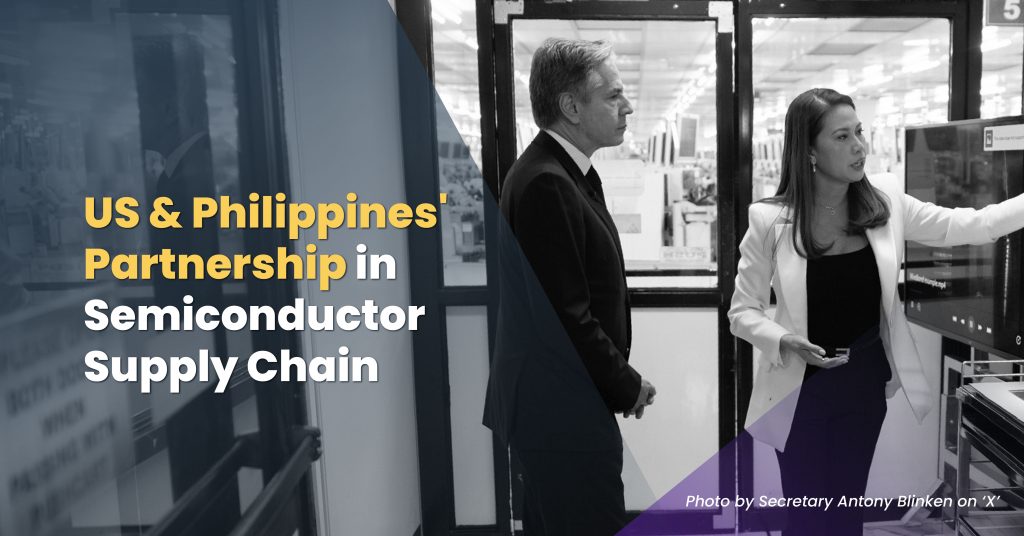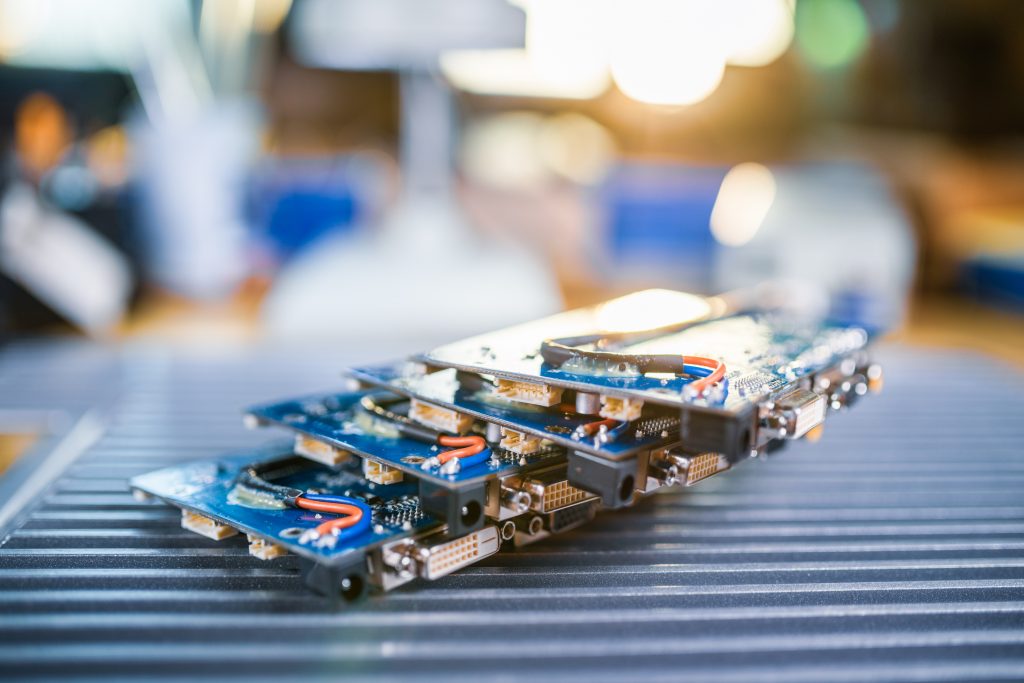The collaboration between the United States and the Philippines within the semiconductor supply chain stands as a pivotal force in the global economy. As essential contributors to the technology industry, their partnership profoundly influences the production and distribution of semiconductors worldwide. Today, we will examine the current status and prospective developments of this strategic alliance, emphasizing its significance and impact on both nations and the semiconductor supply chain.

What is the Semiconductor Supply Chain?
The network of businesses and procedures involved in the production, installation, assessment, and circulation of semiconductor devices—also referred to as chips or integrated circuits—is referred to as the semiconductor supply chain. These gadgets are crucial parts of many different electronic items, such as computers, cell phones, automobile systems, medical equipment, and many more.
Typically, the semiconductor supply chain consists of the following important phases:
Design
Chips are created by semiconductor manufacturers to fulfill precise performance and functional specifications. Processes for design verification, development, and research are included in this phase.
Manufacturing
Following the finalization of the chip design, the manufacturing process starts. This includes employing sophisticated manufacturing techniques like photolithography, etching, deposition, and doping to fabricate the semiconductor wafers. Fabs, or semiconductor fabrication facilities, are in charge of this phase.
Assembly and Packaging
After the production process, discrete semiconductor chips are separated from the wafer and go through the assembly and packaging steps. This entails packing the chips and attaching them to external terminals or leads. To guarantee optimum performance and dependability, advanced packaging technologies like flip-chip, wire bonding, and through-silicon vias (TSVs) are used.
Testing
Semiconductor chips are put through a thorough testing process after packaging to make sure they fulfill quality and performance criteria. Finding any flaws or deficiencies involves functional, electrical, and reliability testing.
Distribution and Supply Chain Management
After testing, semiconductor devices are distributed to customers, including original equipment manufacturers (OEMs) and electronics manufacturers, who integrate them into their products. Supply chain management involves coordinating logistics, inventory management, and demand forecasting to ensure efficient distribution and delivery of semiconductor products.
Procurement in the Semiconductor Supply Chain
The semiconductor supply chain is highly complex and globalized, with companies and manufacturing facilities located worldwide. Collaboration and partnerships among semiconductor companies, equipment suppliers, foundries, assembly and packaging providers, and logistics companies are essential to ensure the smooth operation of the supply chain and meet the growing demand for semiconductor products.
Status of the Semiconductor Supply Chain Partnership
During his visit to the Amkor International Philippines (ATP) manufacturing facility in Cupang, Muntinlupa City, United States Secretary of State Anthony Blinken emphasized the Philippines’ critical position in the global semiconductor supply chain. Blinken described the Philippines as a thriving and increasingly essential partner, highlighting its role in ensuring a robust and resilient semiconductor supply chain.
Strengthening Philippine Supply Chains
Addressing the importance of reliable supply chains, particularly in the face of challenges such as the COVID-19 pandemic, Blinken stressed the necessity of strengthening partnerships with countries like the Philippines. He reiterated the United States’ commitment to enhancing collaboration with the Philippines to fortify the resilience and effectiveness of the semiconductor supply chain.
Blinken’s remarks shed light on the direct impact of the Philippines on global trade and technology. As both nations navigate the complexities of the semiconductor industry, their partnership continues to deepen, driven by shared goals of fostering innovation, economic growth, and international competitiveness.
US and Philippines Collaboration
The ATP visit and tour marked Blinken’s first official engagement in the Philippines since arriving in the country on Monday night, March 19. He is the second high-ranking US official to visit the country this year, following the US Presidential Trade and Investment Mission led by US Commerce Secretary Gina Raimondo from March 11 to 12.
Blinken reiterated the commitments outlined by Raimondo, emphasizing their mutual goal of supporting the growth of the Philippines’ semiconductor industry, particularly in the backend segment, which focuses on testing, assembly, and packaging of semiconductor chips. He acknowledged the progress already achieved but stressed the potential for further development, a priority area of focus for the United States.
International Technology Security and Innovation Fund
The State Secretary highlighted the Philippines as one of the seven countries set to benefit from the International Technology Security and Innovation (ITSI) Fund, established under the CHIPS (Creating Helpful Incentives to Produce Semiconductors) Act of 2022. This initiative aims to strengthen investments in partner nations, particularly focusing on workforce development to enhance their capacity in the semiconductor industry.
The US State Department will collaborate with American and Filipino stakeholders alongside the Arizona State University and the Organization for Economic Cooperation and Development (OECD) project. Together, they will formulate recommendations on the allocation of the ITSI Fund, facilitating the implementation of programs aimed at advancing the semiconductor sector in the Philippines.
Improving the Semiconductor Supply Chain in the Philippines
United States Secretary of State Anthony Blinken has highlighted the Philippines’ crucial position as a “thriving, critical, and increasingly important partner” in fortifying the global semiconductor supply chain.
As a jointly US and Korean-owned company, ATP serves as a Tier 1 outsourced semiconductor assembly and test (OSAT) firm, employing approximately 10,000 Filipino workers across three facilities in Luzon. A significant portion of its exports, around 25 percent, is directed to the US and Asia, supporting US and European companies.
Opportunities for Expansion
ATP President and Country Manager Norberto Viera expressed satisfaction with the US’s interest in the Philippine semiconductor sector, foreseeing opportunities for market expansion and improved conditions for multinational operations in the Philippines.
Operating in 11 countries globally, including seven manufacturing factories in Japan, three in South Korea, and one each in Taiwan, Malaysia, China, and Portugal, Amkor reported revenues of $7.1 billion in 2022. ATP contributed $500 million to $600 million of those revenues, making it the third-largest Amkor facility worldwide.
Projections
With flat growth projected for the current year, ATP maintains an average annual capital expenditure (capex) of roughly P29 billion, or $590 million. Representatives from the company stated that any changes to the capex will depend on how well their semiconductor chips are received by the market.
The corporation runs three locations in the Philippines: two in Laguna Technopark and one in a Special Economic Zone under the Philippine Economic Zone Authority (PEZA) in Cupang, Muntinlupa City.

To sum up, Amkor Technology Philippines (ATP) is a prime example of flexibility and tenacity in the semiconductor sector, with a consistent average yearly capital expenditure of about P29 billion, or $590 million. ATP plays a crucial role in promoting economic growth and technological advancement in the Philippines through its three state-of-the-art facilities that are strategically located in critical economic zones.
ATP is proactive and flexible, able to adjust its capital investment in reaction to changing market conditions and the demand for its semiconductor chips, even though it is forecasting flat growth for the current year. ATP is well-positioned to take advantage of new prospects and establish its leadership in the ever-changing semiconductor industry. It is at the forefront of innovation.





